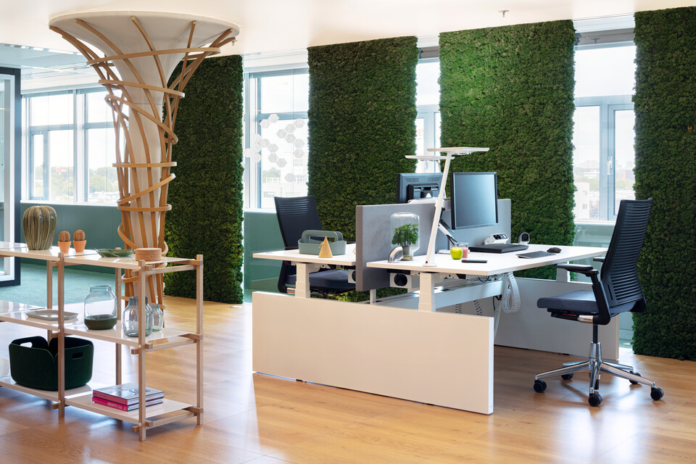Last Updated on December 23, 2025 by Rida Gul
The built environment profoundly affects our physical health, mental state, productivity, and overall quality of life. As humans, we instinctively seek connections with nature, a tendency known as biophilia. To satisfy this natural inclination, designers are progressively incorporating biophilic principles into the built environment. In this article, we will explore the impact of biophilic design on medical offices, and how it can transform patient care.
Table of Contents
What is Biophilic Design?
Biophilic design is a strategic approach to architecture and interior design that seeks to connect building occupants more closely to the natural environment. It goes beyond merely adding plants – it encompasses all aspects of design that can mirror and emulate nature, from materials to layout, lighting, views, and more.
Biophilic Design and Medical Offices
In the realm of healthcare, the benefits of biophilic design are multifold. Medical offices, often associated with anxiety and stress, can immensely benefit from the integration of elements that soothe, heal, and inspire. With well-implemented biophilic design, a trip to the doctor can become a considerably more positive experience.
Stress Reduction
Numerous studies have documented the stress-reducing effects of natural environments. From a mere painting of a serene landscape to a living green wall, biophilic elements can help alleviate anxiety and tension often associated with medical environments. Incorporating natural materials, colours, and textures, coupled with abundant natural light, can go a long way in creating a calming atmosphere.
Improved Well-being
Being in close contact with nature has been shown to boost mental well-being, and even physical health. By incorporating natural elements in design, medical offices can create an environment that promotes healing. Patients in spaces with nature views, for instance, have been reported to recover more quickly than those without.
Enhanced Patient Experience
The inclusion of natural elements within the built environment can elevate the overall patient experience. It’s not just about the aesthetic appeal; it’s about creating spaces where people feel comfortable, at ease, and hopeful.
Boost Staff Morale
It’s not just patients who benefit from biophilic design in medical offices. Working in a nature-infused environment can help reduce staff burnout, improve productivity, and foster job satisfaction. Happy staff translates to better patient care, making it a win-win situation.
Implementing Biophilic Design
Adopting biophilic design in medical offices is more than placing a few potted plants around. It’s a thoughtful integration of nature into the space, where each design choice supports wellbeing and positive experiences. These include maximising natural light, providing views to the outdoors, using natural materials and textures, incorporating green walls and indoor water features, and choosing calming colours inspired by nature.
For medical office fitouts, architects and designers must understand the space’s functionality while focusing on patient comfort and wellbeing. As they say, the devil is in the detail, and specific medical offices fitout design needs careful consideration to each of these factors.
The impacts of biophilic design on medical offices are profound, promising a future of healthcare environments that are not only functional but truly healing. It’s not merely a design trend but a significant shift towards creating healthier, more human-centric spaces. The healthcare industry stands to benefit greatly from embracing this design approach, positively affecting patients, staff, and the community at large. In the end, isn’t that what healthcare is truly about – promoting health, wellness, and overall quality of life?
Apart from this, if you want to know about Creative Strategies then please visit our Featured category



























